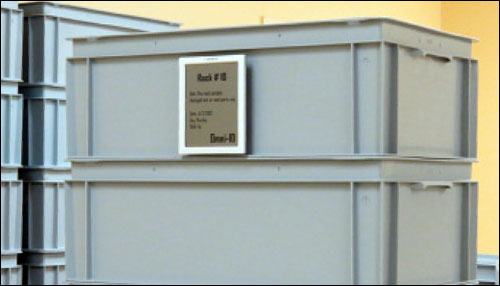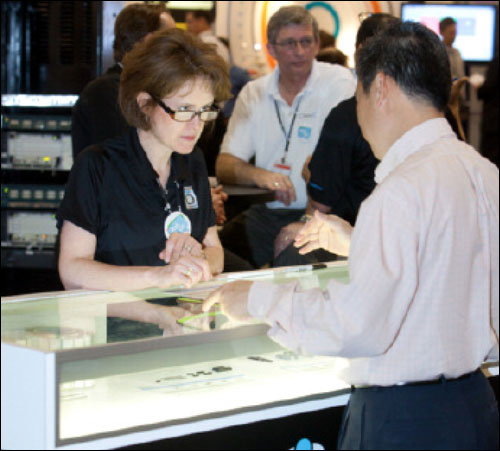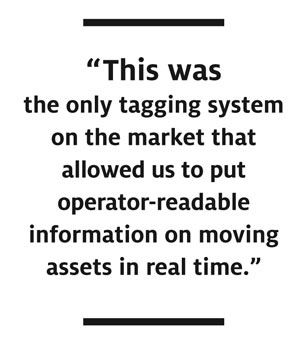Jun 01, 2012Many companies use printed cards, labels or work orders in their daily operations. In a factory, for example, goods traveling down an assembly line might be accompanied by printed instructions that tell workers what color paint to apply or what parts and options to add. At a warehouse, a card attached to a tote might list the items a worker must pick to fill an order.
But sometimes a company needs to change instructions in mid-operation for a specific product or order, or perhaps across an entire plant. That can mean halting production while new cards are printed, and then having a worker swap the old paper instructions for the new ones. Manual paper-based systems are not only labor-intensive, they also are time-consuming, costly (think of all that paper and ink) and error-prone.
Omni-ID developed a more efficient solution: The ProView Visual Tagging System lets businesses use RFID to track assets and work-in-process—and update instructions automatically, on the fly. The system features a bistable LCD screen with an active ultrahigh-frequency (869- to 928-MHz) RFID tag and an EPC Gen 2 passive inlay. Omni-ID offers four models of ProView tags, with display screens available in three widths: 2 inches, 4 inches and 6 inches. A ProView tag controller transmits the instructions, via a proprietary air-interface protocol. An Omni-ID printer driver lets the software program being used to print cards and labels display the text or graphics immediately on a ProView tag's screen. (Any standards-based EPC Gen 2 interrogator can read or encode a ProView tag's passive inlay.)
"We project an ROI on the system costs in just over 14 months, based on hard savings in consumables," the logistics manager says. "We expect further 'soft savings' in utilization of manual labor, efficiency and quality-of-service metrics as the system helps us improve our operations. Any cyclic process—especially one that encounters frequent changes, relies on operators to make decisions based on printed instructions or where consumables are used repetitively for labeling—can benefit greatly from this technology."
Nabrotzky sees similar benefits for the health-care industry. A ProView tag attached to a wheelchair, for example, could display a patient's name, instruct an orderly where that patient is scheduled to go and issue an alert if the patient is taken to the wrong place.
An EPC Gen 2 reader, for example, could be used to send a wake-up protocol to a P-series tag, allowing its circuitry to remain dormant when appropriate, thereby extending the tag's battery life. Another benefit of integration of the EPC inlay with the PCB is that an EPC Gen 2 reader could be used to trigger a change in any text or graphics preprogrammed into the tag. For instance, when a ProView tag attached to an item arrives at workstation 1, an EPC Gen 2 reader could wake up the tag and cause it to display preprogrammed instructions specific for workstation 1. If the item arrives at the wrong workstation, the reader could detect that error and instruct the tag to display an image of a stop sign.
In addition to improving efficiencies, ProView Visual Tagging System is a green solution. At the sortation plant mentioned earlier, the system has eliminated the need to print 900,000 sheets of paper formerly printed annually. Says the logistics manager: "The elimination of paper in our process contributed toward our sustainability goals and mandated targets to reduce environmental impact."



